Learn how to care for the massive, prehistoric-looking philodendron gigas houseplant. Get tips for providing the proper light, water, humidity and soil to grow huge leaves spanning 4-6 feet across!
If you’re a fan of big, bold houseplants, then you need to get your hands on a philodendron gigas. This massive aroid from the tropical rainforests of South America can reach tree-like proportions indoors with its enormous, heavily fenestrated leaves. Despite its gargantuan size, the philodendron gigas is surprisingly easy to care for if you understand its needs. Read on to learn how to grow one of these prehistoric-looking plants in your home!
All About Philodendron Gigas
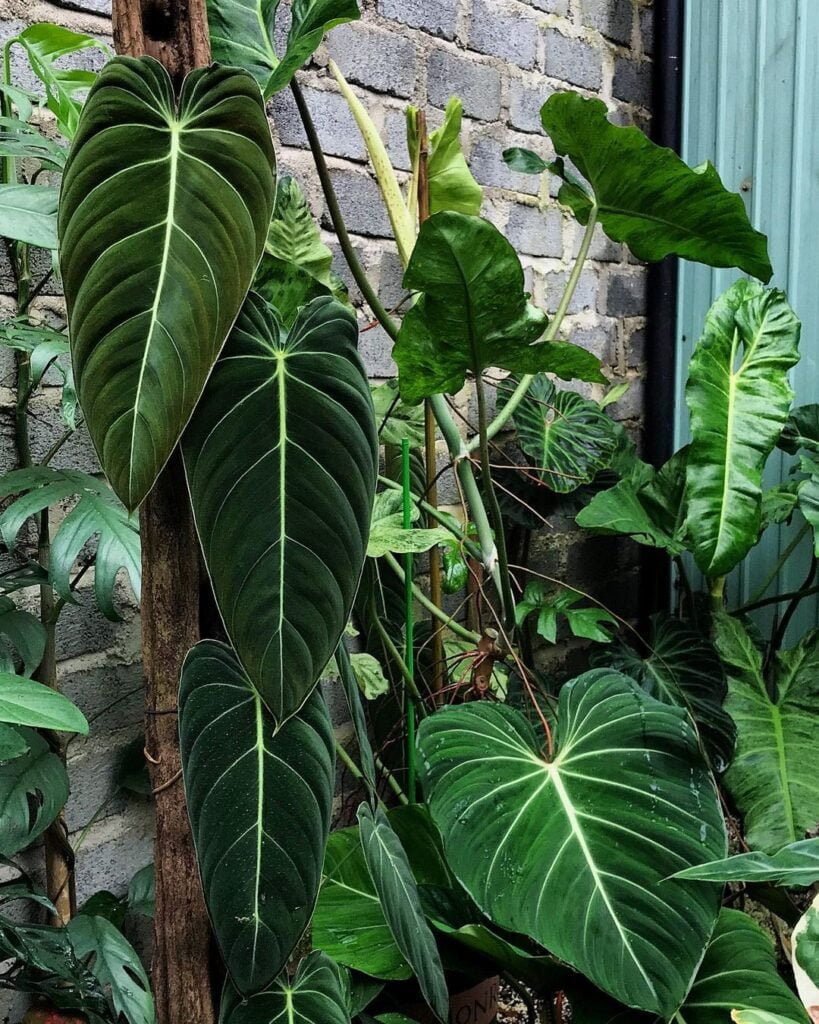
Also known as the gigantic philodendron or gargantuan philodendron, this species hails from the sweltering rainforests of Colombia and Ecuador. In its natural habitat, the gigas starts off as an epiphyte, germinating in the crotches of trees. Its massive leaves help capture sunlight filtered through the dense jungle canopy.
As it matures, thick, fibrous roots develop that allow it to climb incredibly tall, using the host tree as a sort of trellis. At maturity, the gigas can grow over 15 feet in height with leaves that reach an astounding 12 feet or more across! Its deeply lobed, ragged-edged leaves resemble something straight out of the Jurassic period, lending it another common name – the dinosaur plant.
While they’ll never achieve such gargantuan proportions indoors, philodendron gigas still make for some of the largest, most impressive houseplants you can grow. With proper care, it’s possible to cultivate leaves spanning 4-6 feet across from a well-established gigas. The plant’s thick corky trunk and heavily fenestrated leaves create a structural, architectural look that’s hard to beat.
Caring for Philodendron Gigas
Despite its immense size, the philodendron gigas is remarkably unfussy when grown as a houseplant. By replicating its preferred tropical environment, you can easily keep this jurassic monster happy indoors.
Light
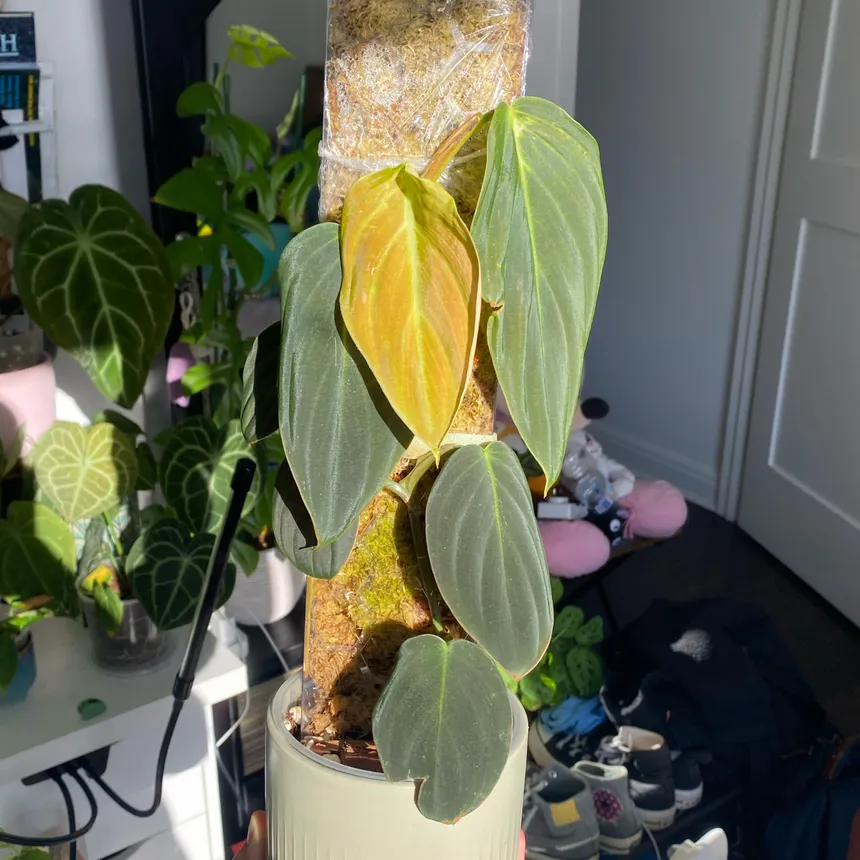
Like many large-leaved tropical plants, philodendron gigas prefer bright, filtered light. Too much direct sun will scorch those massive leaves. An east or west-facing window with a sheer curtain works well. You can also situate the plant several feet back from a south window.
If the leaves start developing crisp brown edges or pale, washed out coloring, increase the light intensity by moving it into a sunnier location. Inadequate light will also cause new leaves to emerge much smaller than their potential size. Philodendrons can tolerate medium light conditions but growth will be slower.
Bright artificial lighting can substitute for natural sunlight if needed. Place the plant under grow lights or high output T5 fluorescent bulbs for at least 10-12 hours per day. Rotate the plant periodically to ensure even growth and leaf development.
Water and Humidity
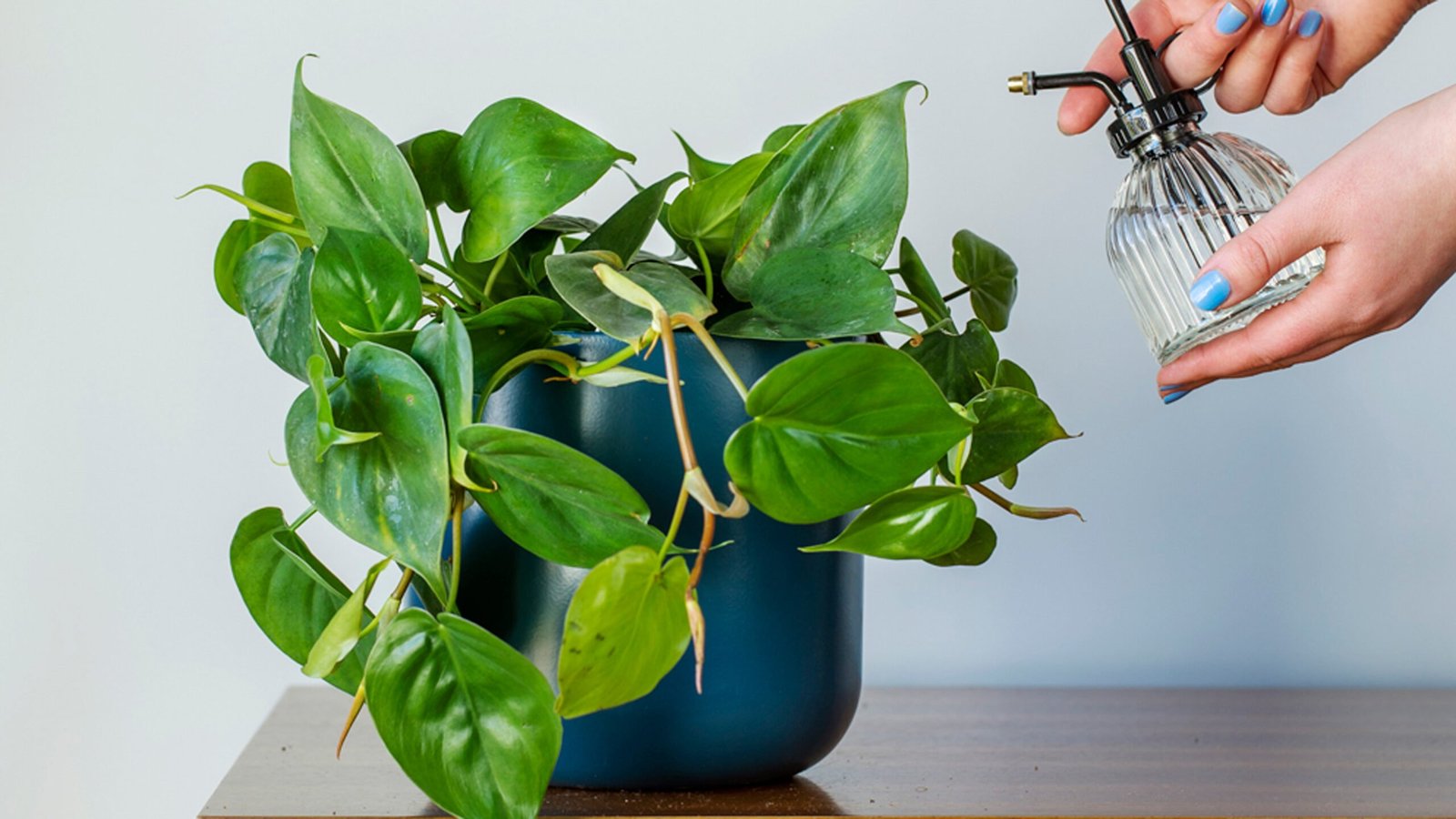
The gigas needs consistently moist soil to sustain those massive leaves, but it absolutely cannot tolerate soggy conditions that lead to root rot. The best approach is to wait until the surface starts drying out, then water thoroughly until it drains freely from the bottom of the pot. Discard any excess water after 30 minutes.
Factors like potting mix, pot size, temperature and light levels all affect how quickly the soil dries out. You may need to water every 5-7 days in a warm, bright room, or just once every 2-3 weeks in cooler, darker conditions. Yellowing bottom leaves typically indicate underwatering.
While the gigas likes moisture, it absolutely can’t tolerate sitting in water-logged soil for prolonged periods. Make sure to use a fast-draining, chunky potting mix and pots with ample drainage holes. Terra cotta pots are better than glazed ones for avoiding soggy soil.
Originating from steamy tropical rainforests, philodendron gigas thrive on humidity levels of 60% or higher. Run a humidifier nearby, set the pot on a pebble tray filled with water, or group it with other humidity-loving houseplants. Misting the leaves won’t raise humidity enough but can help dislodge dust and debris.
Temperature
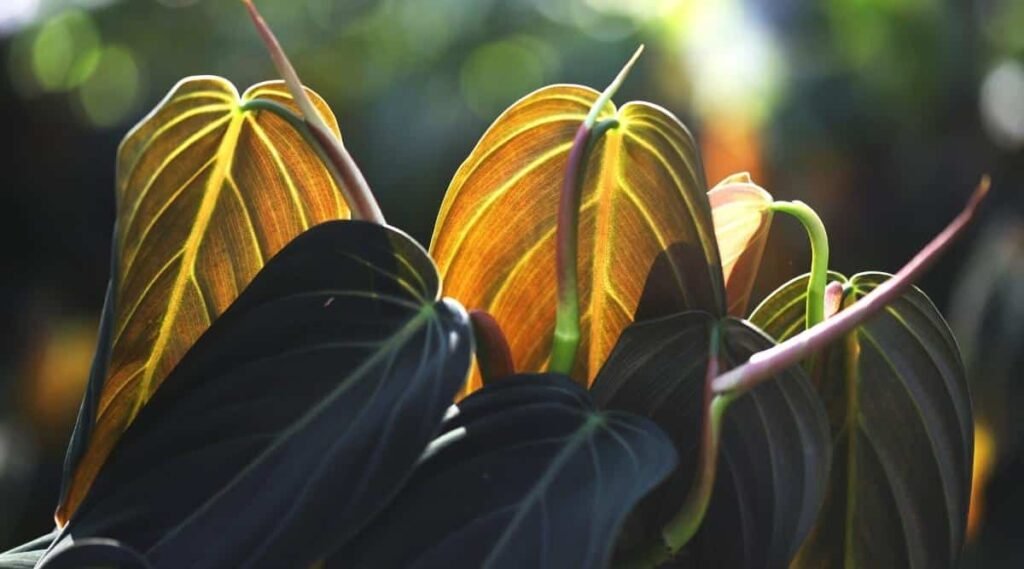
Average household temperatures of 65-85°F are ideal for philodendron gigas. They’ll grow slower below 60°F and above 90°F. Avoid cold drafts and sudden temperature shifts. They can tolerate brief dips into the 50s in winter but not for prolonged periods.
These rainforest plants cannot take freezing temperatures. If you move yours outdoors in the summer months, make sure to bring it back inside before nighttime temps drop below 50°F in fall.
Potting Mix and Fertilizer
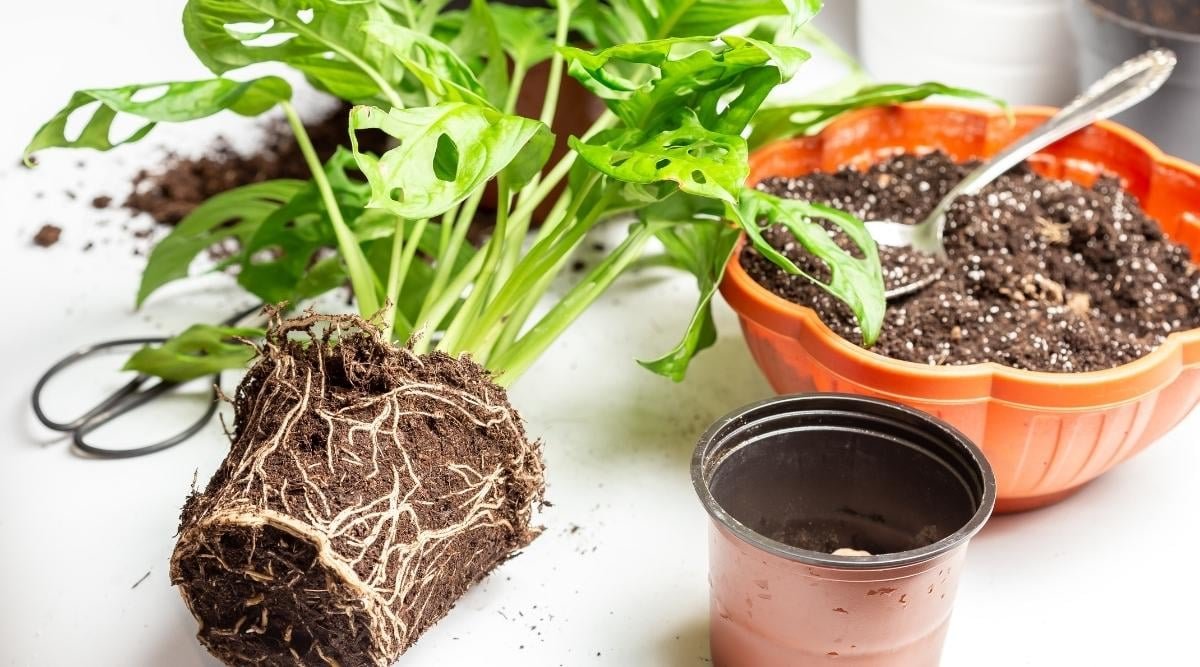
A chunky, fast-draining mix is essential to prevent the gigas’ succulent roots from rotting. Use a combination of orchid bark, perlite/pumice, charcoal and peat moss or coir. You can find commercial philodendron and aroid mixes specifically formulated for these plants.
Feed every 2-4 weeks in spring and summer with a balanced fertilizer diluted to half strength. You can either use a liquid houseplant fertilizer or add organic granular fertilizers to the soil. Cut back feeding in winter when growth naturally slows down.
Philodendrons are heavy feeders, so providing nutrients regularly will maximize growth and promote those enormous leaves everyone wants. Always water thoroughly before feeding to avoid root burn.
Pruning, Support and Repotting
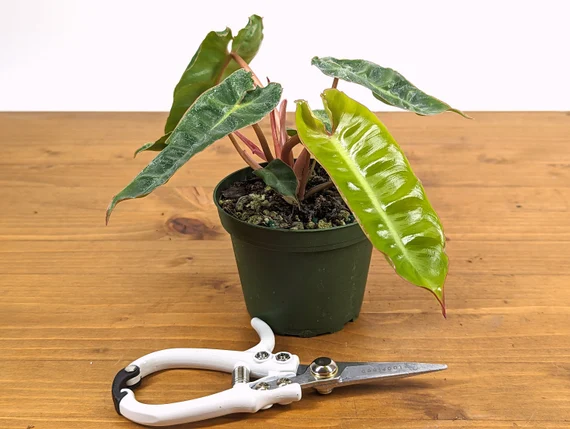
Prune off dead or damaged leaves at the base as needed, using clean shears dipped in a diluted bleach solution. It’s also fine to trim away any leaves blocking light from reaching the center of the plant. Cut just below the node and it may sprout a new growth point.
As the gigas matures, its leaves will grow heavier and the stems may need support to prevent drooping and snapping. Insert bamboo stakes or trellises into the soil and loosely attach the stems with soft plant ties. You can also wrap stems around the stakes as they grow to add more rigidity.
Repot annually in spring using a container 2-4 inches wider than the previous pot. The mature plant’s size does limit how frequently you can shift it into larger homes. Consider building a permanent wooden planter box for established specimens.
Like many aroids, it’s best to divide the rootball and re-plant the offshoots into fresh soil every 2-3 years. This will help rejuvenate the plant and prevent it from becoming root bound in that finite space.
Propagating Philodendron Gigas
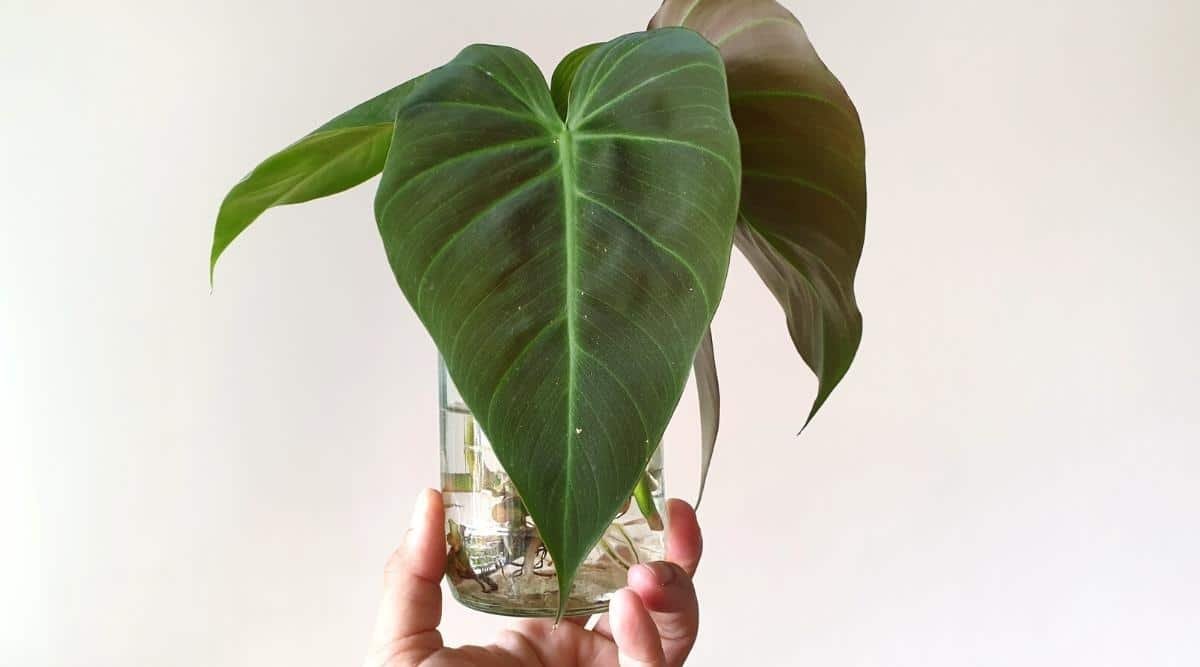
There are two ways to propagate a philodendron gigas – seed and division. However, seeds are notoriously difficult to germinate, often taking months at consistent warm temperatures. Most home growers will have better luck with division.
To divide your gigas, carefully unpot it and separate any offsets growing from the main rootball with a sharp, sterilized knife. Each offset will need a section of the main rhizome with both roots and growth points attached. Pot those pieces up individually in fresh aroid potting mix and lightly water them in.
Provide bright, indirect lighting, high humidity and keep the potting mix evenly moist. The offsets may go through a period of transplant shock initially, but should start pushing out new growth within a few weeks.
With their gigantic foliage and prehistoric vibes, philodendron gigas are sure to turn heads and spark conversation. Start one from a small division or nursery seedling, and you can cultivate an absolute monster houseplant that will amaze guests for years to come!
Pingback: How to Grow and Care for Lucky Bamboo Indoors -
Pingback: How to Grow Peperomia Obtusifolia (Baby Rubber Plant) -
Pingback: Whale Fin Snake Plant Care Guide -
Pingback: How to Grow and Care for Calathea Orbifolia -
Pingback: Philodendron Gigas: The Jurassic Monster Plant ...
Pingback: Philodendron Gigas: The Jurassic Monster Plant ...